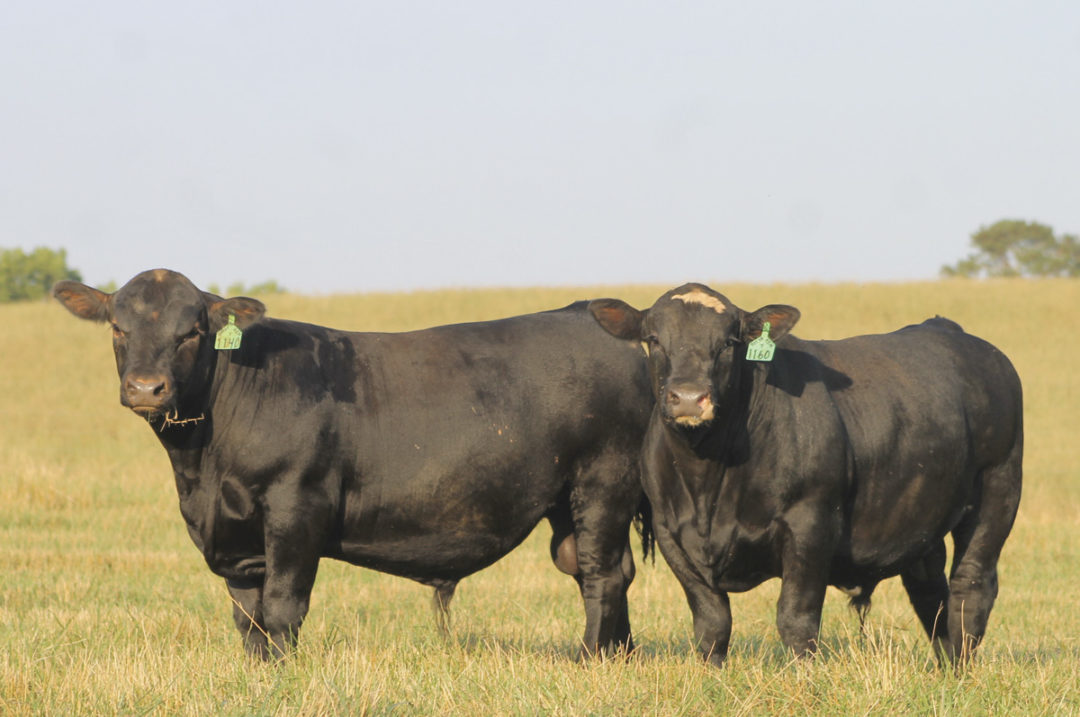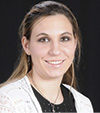As the genetics business becomes increasingly competitive, commercial cattlemen and seedstock producers are ramping up their efforts to market the most desired traits as efficiently as possible. Among the ways they have accomplished this is developing composite herd sires.
Both true composites (made of three or more breeds and often the result of multiple generations) and hybrid composites (purebred crosses such as LimFlex and SimAngus) are often in high demand at bull sales and lead sire trends. While greater genomic evaluation accuracy and availability have certainly fueled the propagation of crossbreeding, the biggest impact is the tried-and-true results in the progeny, as testified by cattle producers.
“One of the things that we wouldn’t have had access to in the past is hybrid seedstock that was also backed by a high-quality genetic evaluation for those individuals,” says Megan Rolf, an associate professor specializing in genomics and genetics at Kansas State University. “That’s not true anymore for hybrid seedstock or composite breeds, like Beefmaster. We have high-quality genetic evaluations behind those animals.”
Comparison to purebreds
To meet specific demands, purebreds have been the gold standard for years.
“No single breed by itself has been designed to solve all the dilemmas. I don’t care what breed that is or how slick the marketing campaign that tries to convince us otherwise,” says Chip Kemp, director of the American Simmental Association and International Genetic Solutions commercial and industry operations. “Straightbreeding is just not capable of meeting all the challenges that face our business.”
Kemp also points out that composite cows tend to have better fertility and faster rebreeding rates that last throughout their lifetimes compared to purebred counterparts. This is a boon to a consistent calf crop and its management. Similarly, terminal end steers and heifers tend to have higher weaning and yearling weights, plus they show a more efficient rate of gain.
Before jumping on the composite sires bandwagon, Dan Busch, beef reproductive and research specialist with Select Sires, reminds ranchers to consider the goals of the herd, which are often multifaceted.
“For purebred animals, there’s enough genetic variation within breeds throughout the industry,” he notes. “Meaning that if you want to select a purebred animal that’s ultimately terminal genetics, great terminal type cattle, you can use the purebred animals to do that same thing. It’s what works for each individual ranch and what their bucket of goals are for those cattle.”
Bradley Gibbs of Gibbs Farms in Ranburne, Alabama, has a seedstock herd made up of 200 head of Simmental and 650 head of SimAngus cattle.
“Hybrid vigor is essential not only to our herd, but most importantly to our customers’ herds,” he says. “Heterosis gives us a performance boost of 20 percent, in comparison to straight-bred cattle, and also an increased calving rate of 4 percent and an increase in longevity of 25 percent.”
Paternal and maternal heterosis
There are distinct advantages that both maternal and paternal heterosis provide in their unique ways. The vast majority of anecdotal evidence suggests the maternal side tends to offer more of the traits that contribute to productive offspring and longevity, while the paternal side offers more traits that impact fertility. Maternal heterosis is the big advantage here – the ability to use a composite or hybrid on the cow side to have maternal heterosis in a package that can be managed almost like purebreds. The focus of each can be influential in their own ways.
For example, Rolf notes that composite herd sires may be attractive for commercial producers who use a rotational system for raising replacements and market animals. This allows for flexibility of different matings.
“They may be able to use hybrid seedstock in a rotation or even use a hybrid or composite herd of females to replace the rotational part of the system and then siphon off some of those older animals into a terminal mating system to maximize productivity in output traits,” she says. “When we’re thinking about terminal crosses, we can then really think about breed complementarity and maximizing individual performance of the offspring. The impacts of heterosis on carcass traits and highly heritable traits are much lower, and we’re not keeping replacements in this part of the system.”
 Photo provided by Bradley Gibbs.
Photo provided by Bradley Gibbs.
Purchase decisions
One of the beauties of the composite approach and of hybrid bulls, according to Kemp, is they can often be purchased for less than their purebred counterparts. That means one gets more responsible and balanced genetics along with sire longevity from paternal heterosis and at a price point the average cow-calf producer can better afford. All in, additional breeding seasons, and each mating, cost you a fraction of a more traditional approach.
“The marketing consistency of a composite program is often overlooked,” says Kemp. “With the traditional approach of using purebred sires in a crossbreeding rotation, the cow herd is constantly swinging from one end of the spectrum to the other as the daughters follow the suit of the sire. With each sire breed change, the heifers swing in a different direction. Ultimately, producers are building in variation and lack of uniformity to their program. It's hard to avoid. Hybrids allow you to keep uniformity in your heifers, hence, balance across your herd. As a result, you get what we all seek: greater leverage. Why? Because you have more calves who look and perform alike. When it comes to sale day, we all recognize that larger, more consistent pens bring more money, period.”
Another big contributor to the adoption of composite and hybrid sires is the higher accuracy of genetic evaluations. Gibbs sees more genomics being run each year, which ensures the data for each herd is the most up to date and as accurate as possible. This, he believes, allows buyers to see the hybrid benefits directly and gives them more confidence in their purchase and business decisions.
Besides more genetic input, there is also a rise in industry-wide collaboration to improve composites, Busch says. This is especially evident as breed associations work to develop expected progeny differences (EPDs) for different breed composites and hybrids.
“We’re seeing breeds work together to get that information,” says Busch. “Also, breeders are using information from crossbred herds within their genomic evaluations for better predictions and seeing how those crossbred animals will perform in comparison to their purebred individuals.”
The production benefits, Gibbs believes, are in line with the goals for production efficiency seen across all facets of agriculture to feed a growing world.
“We can accomplish this goal by doing more with less. Hybrids give us the ability to be more efficient and more sustainable with our resources,” he says. “Our goal is to produce bulls that can go to work in any environment, in any location, and hybrids and heterosis are the tools that allow us to do so.”








